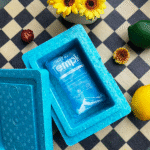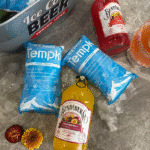Logística Internacional da Cadeia de Frio Farmacêutica: Melhores práticas e tendências para 2025 e além
Produtos farmacêuticos, especially biologics and vaccines, são altamente sensíveis a flutuações de temperatura, making precise temperature control essential during their global transport. Em 2025, as demand for temperature-sensitive medicines grows, it’s more critical than ever to adopt the best practices and technologies for pharma cold chain logistics. This article provides an overview of the best practices, tecnologias, and trends shaping the pharma cold chain landscape.
-
Why is real-time temperature monitoring crucial in pharma shipments?
-
Key challenges and solutions in maintaining the cold chain for pharmaceuticals
-
Emerging trends in pharma cold chain logistics for 2025 e além
-
How to optimize your pharma cold chain logistics for global shipments
What is International Pharma Cold Chain Logistics?
International pharma cold chain logistics refers to the transportation of pharmaceutical products that must be kept within a specified temperature range during transit. Esses produtos, como vacinas, Biologics, e certos produtos farmacêuticos, are sensitive to temperature variations and require careful management from warehouse to delivery point.
Tipicamente, pharmaceutical cold chains need to maintain temperatures from 2°C to 8°C (36° F a 46 ° F.) for many drugs and even colder for products like vaccines, which often require temperatures as low as -20°C (-4°F). Managing this process requires specialized packaging, transportation methods, e monitoramento em tempo real.
Key components of pharma cold chain logistics include:
-
Temperature-controlled storage: Ensuring appropriate storage conditions from manufacturing through to delivery.
-
Transporte refrigerado: Using specialized trucks or air cargo containers equipped with temperature-tracking systems.
-
Monitoramento de temperatura: Utilizing sensors and IoT technologies to track conditions in real time, evitando excursões de temperatura.
Why Is Real-Time Temperature Monitoring Crucial in Pharma Shipments?
In pharma cold chain logistics, real-time temperature monitoring is essential to maintain product integrity. Temperature fluctuations during transit can degrade the effectiveness of sensitive drugs and biologics, potentially rendering them useless and even hazardous.
Modern cold chain logistics systems are equipped with sensors that continuously monitor the temperature and humidity of shipments. This data is transmitted to the relevant stakeholders, enabling them to take immediate corrective actions if a deviation occurs.
Benefits of real-time monitoring:
-
Preventing spoilage: Ensures products stay within their required temperature range.
-
Improved transparency: Provides stakeholders with continuous, accurate data on product conditions.
-
Compliance assurance: Helps pharma companies comply with regulations and avoid costly violations.
Key Challenges and Solutions in Pharma Cold Chain Logistics
Desafios:
-
Controle de temperatura: Managing precise temperature profiles is complex, especially in regions with extreme temperatures.
-
Complexidade regulatória: Different countries have varying regulations for pharmaceutical shipping, including Good Distribution Practices (PIB) and local customs rules.
-
Logistical complexity: Multimodal shipping, with goods moving across air, mar, e estrada, adds complexity to the cold chain.
Soluções:
-
Advanced packaging solutions: Using insulated packaging, Materiais de mudança de fase (PCMs), and refrigerated containers to maintain the required temperatures.
-
Sistemas de monitoramento inteligentes: IoT-enabled sensors and automated alerts help ensure that temperature deviations are identified and corrected immediately.
-
Certified logistics providers: Partnering with experienced cold chain logistics providers who are familiar with international regulations and who have the required infrastructure to support pharma transport.
Emerging Trends in Pharma Cold Chain Logistics for 2025 e além
1. IA e aprendizado de máquina
AI and machine learning are revolutionizing cold chain logistics by predicting and optimizing routes based on historical data, weather patterns, e condições de envio. These technologies help prevent delays and manage risks before they occur.
Practical application: AI-driven predictive analytics can analyze past shipping data to forecast temperature fluctuations, enabling proactive decisions to protect shipments.
2. Blockchain for Enhanced Transparency
Blockchain technology is increasingly being adopted to enhance visibility and accountability in pharma logistics. It allows for secure and tamper-proof tracking of products throughout their journey, ensuring transparency and reducing the risk of fraud or errors.
Exemplo: Pharmaceutical companies are using blockchain to create immutable records of each step of the cold chain, from manufacturing to final delivery.
3. Sustainability and Eco-friendly Solutions
As sustainability becomes a key concern in global logistics, pharma cold chains are adopting greener solutions. This includes using biodegradable packaging materials, energy-efficient refrigeration systems, and optimizing transportation routes to reduce carbon emissions.
Practical application: Many companies are investing in solar-powered refrigerated containers and carbon-neutral shipping options to meet sustainability targets.
How to Optimize Your Pharma Cold Chain Logistics for Global Shipments
1. Adopt Real-Time Temperature Monitoring Systems
Ensure all shipments are equipped with IoT-enabled temperature sensors that provide real-time updates and alerts. This ensures you stay ahead of any issues before they escalate.
2. Partner with Certified Cold Chain Logistics Providers
Work with logistics providers who specialize in pharmaceutical cold chains. These experts ensure compliance with international standards and have the necessary infrastructure to maintain temperature control during transit.
3. Focus on Packaging and Insulation
Use alta qualidade, embalagem com temperatura controlada, such as phase-change materials and insulated boxes, to minimize the risk of temperature excursions. This is especially crucial for long-haul or remote shipments.
Commonly Asked Questions About Pharma Cold Chain
Q1: What temperature ranges should I support in an international pharma cold chain?
Pharmaceutical products require specific temperature ranges. For most drugs, the temperature range is between 2°C and 8°C, but some products, como vacinas, may require even lower temperatures, as low as -70°C.
Q2: How can I ensure compliance with international regulations for pharma cold chains?
Stay up-to-date with the latest GDP and GMP guidelines, work with certified logistics providers, and implement real-time monitoring systems to ensure compliance with international cold chain standards.
Summary and Key Takeaways
The international pharma cold chain is evolving rapidly with advancements in technology, sustentabilidade, e regulamentos. By adopting best practices such as real-time monitoring, leveraging AI and blockchain technologies, and partnering with certified providers, pharmaceutical companies can optimize their cold chain logistics for efficiency and compliance in 2025 e além.
Etapas acionáveis:
-
Implement real-time temperature monitoring across all shipments.
-
Ensure your logistics provider offers end-to-end visibility and complies with international standards.
-
Invest in sustainable packaging and energy-efficient transportation options to meet growing environmental demands.
Sobre Tempk
E tempk, somos especializados em fornecer confiança, temperature-controlled logistics solutions for the pharmaceutical industry. With our cutting-edge tracking systems, certified cold chain services, and commitment to sustainability, we ensure your products are transported safely and efficiently across borders.
Próximo passo: Reach out to Tempk for a tailored cold chain audit and ensure your shipments meet the latest global standards.























